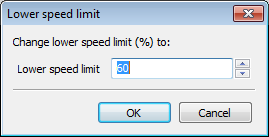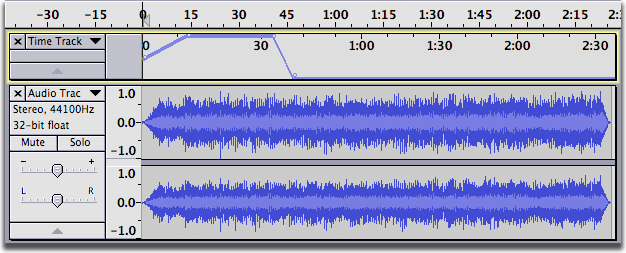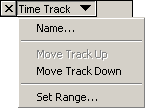Time Tracks
From Audacity Manual
A Time Track is used in conjunction with one or more audio tracks to gradually increase or decrease playback speed over the length of the audio. Speed changes are controlled by manipulating the blue "time warp" line with the Envelope Tool used for making gradual volume changes. If the blue line is dragged above the horizontal, the audio plays faster; if dragged below, it plays slower.
The degree of speed warping that occurs when the line is dragged to the top and bottom of the time envelope is determined by "Set Range" on the Time Track's drop-down menu.
Menu
Clicking on the triangle on the panel on the left of the track provides some options for the time track.
- "Set Range" lets you set first the minimum and then the maximum pitch change. Values are expressed in percentage values relative to 100%.
To Use (Time Warping Tutorial)
- Start by choosing New Time Track from the Tracks Menu
- Change the range of time warping by clicking on the Track Pop-Down Menu and choosing Set Range (an option which only appears for Time Tracks)
The converter used will be the one(s) set up on the Quality Preferences tab of the Preferences. You can make separate choices for Realtime (playback) and High Quality (exporting), trading speed against quality.
Older computers may be incapable of playing audio in real-time that makes use of a Time Track, however you can always Export the file as a WAV and then playback the WAV file later.
- To edit the time warping, choose the envelope tool from the Control Toolbar - the same tool you use to edit amplitude envelopes in Audio Tracks. Click to create and edit control points. Drag points off the track to delete them.
The Time Track has a ruler. As you edit the warping, the ruler will warp to show you at what time playback will reach each place in the audio.




